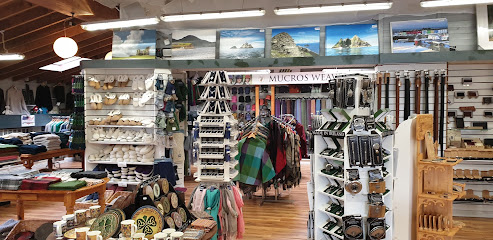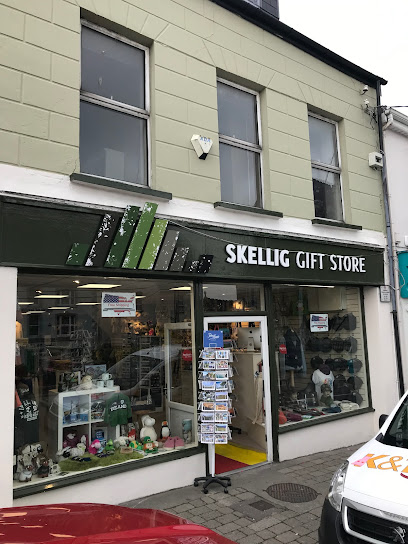
The Mystical Skellig Islands: Ireland's Ancient Marvels
Discover the Skellig Islands: A blend of ancient monastic heritage, thriving seabird colonies, and stunning natural landscapes off Ireland's rugged coast.
Located off the coast of County Kerry, the Skellig Islands invite you to a journey through time and nature's untouched beauty. These rugged islands, Skellig Michael and Little Skellig, are renowned for their dramatic landscapes and historical significance. Skellig Michael, a UNESCO World Heritage site, is home to a well-preserved monastic settlement dating back to the 6th century. The climb to the monastery is steep and challenging, but the panoramic views and the sense of history are well worth the effort. The ancient stone huts and oratories offer a glimpse into the lives of early Christian monks who sought solitude and spirituality in this remote haven. Little Skellig, though inaccessible to visitors, is a sanctuary for seabirds. It hosts one of the world's largest gannet colonies, making it a birdwatcher's paradise. Boat tours around the islands provide breathtaking views of these majestic birds in their natural habitat, with the added bonus of spotting seals and dolphins in the surrounding waters. The Skellig Islands have also gained fame as a filming location for the Star Wars saga, adding a modern cultural layer to their allure. Whether you're a history enthusiast, nature lover, or film buff, the Skelligs offer a unique and unforgettable experience.
Local tips in The Skelligs
- Book boat tours in advance, especially during peak season, as they can sell out quickly.
- Wear sturdy walking shoes and bring water for the hike up Skellig Michael.
- Check weather conditions before your trip, as rough seas can affect boat schedules.
- Pack a pair of binoculars for birdwatching and spotting marine life.
- Carry a light jacket or windbreaker, as weather can change rapidly on the islands.
The Mystical Skellig Islands: Ireland's Ancient Marvels
Located off the coast of County Kerry, the Skellig Islands invite you to a journey through time and nature's untouched beauty. These rugged islands, Skellig Michael and Little Skellig, are renowned for their dramatic landscapes and historical significance. Skellig Michael, a UNESCO World Heritage site, is home to a well-preserved monastic settlement dating back to the 6th century. The climb to the monastery is steep and challenging, but the panoramic views and the sense of history are well worth the effort. The ancient stone huts and oratories offer a glimpse into the lives of early Christian monks who sought solitude and spirituality in this remote haven. Little Skellig, though inaccessible to visitors, is a sanctuary for seabirds. It hosts one of the world's largest gannet colonies, making it a birdwatcher's paradise. Boat tours around the islands provide breathtaking views of these majestic birds in their natural habitat, with the added bonus of spotting seals and dolphins in the surrounding waters. The Skellig Islands have also gained fame as a filming location for the Star Wars saga, adding a modern cultural layer to their allure. Whether you're a history enthusiast, nature lover, or film buff, the Skelligs offer a unique and unforgettable experience.
When is the best time to go to The Skelligs?
Iconic landmarks you can’t miss
Kerry Cliffs (Aillte Chiarraí)
Discover the stunning panoramic views of Kerry Cliffs, a must-visit natural wonder along the Skellig Ring in County Kerry, Ireland.

Skellig Michael Tours - Skellig Michael Landing Tours and Boat Tours - Casey's Skellig Island Tours
Discover the breathtaking landscapes and rich history of Skellig Michael, a UNESCO World Heritage Site in County Kerry, Ireland.
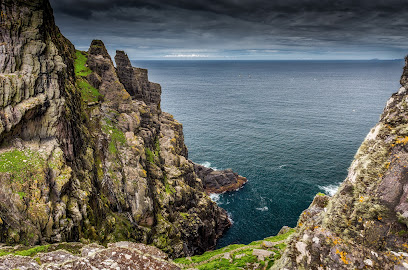
The Skellig Experience Visitor Centre
Explore the rich heritage and stunning landscapes of the Skellig Islands at The Skellig Experience Visitor Centre on Valentia Island.
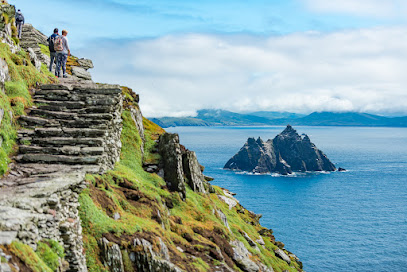
Sceilg Mhíchíl/ Great Sceilig
Explore Sceilg Mhíchíl, a stunning UNESCO World Heritage Site off the coast of Ireland, rich in history and breathtaking natural beauty.

Skellig Michael tours- Skellig Michael landing tours - Skellig Island Eco tours - Skellig Boats - Skellig Michael Cruises
Explore Skellig Michael: A breathtaking island with ancient ruins, stunning landscapes, and rich wildlife, perfect for an unforgettable adventure.
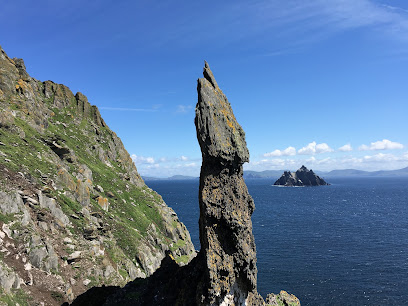
Ballinskelligs Abbey
Explore the historic Ballinskelligs Abbey in County Kerry, where ancient ruins meet breathtaking coastal views.
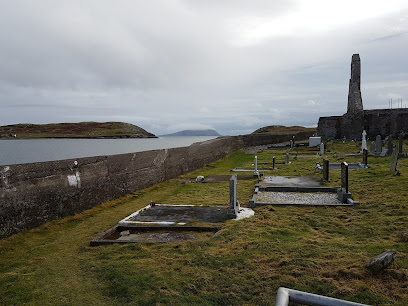
Mainistir Fhionáin (St. Fionan’s Monastery)
Explore St. Fionan's Monastery on Skellig Rock, a breathtaking historical landmark in County Kerry, revealing Ireland's rich monastic heritage and stunning coastal views.
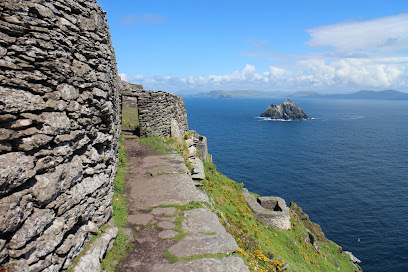
Skelligs Rock Cruises
Experience the breathtaking beauty and rich history of the Skellig Islands with Skelligs Rock Cruises, a must-visit for every traveler.

Skellig Tours
Embark on a breathtaking adventure with Skellig Tours, exploring Ireland's stunning coastal landscapes and rich history on the Atlantic waters.
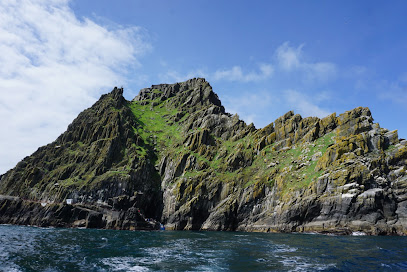
Skelligs Monks Trail guided walk
Experience the captivating Skelligs Monks Trail in Co. Kerry, where history meets breathtaking coastal beauty on an unforgettable guided walk.
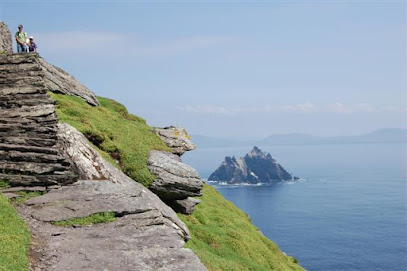
Sceilg Bheag (Skellig Rock Small)
Experience the serene beauty of Sceilg Bheag, a stunning nature preserve in County Kerry, Ireland, rich in wildlife and breathtaking landscapes.
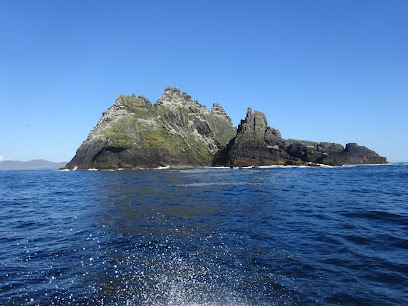
Skellig Michael Lower Lighthouse
Explore the breathtaking Skellig Michael Lower Lighthouse, a historic gem surrounded by stunning landscapes and rich maritime heritage.
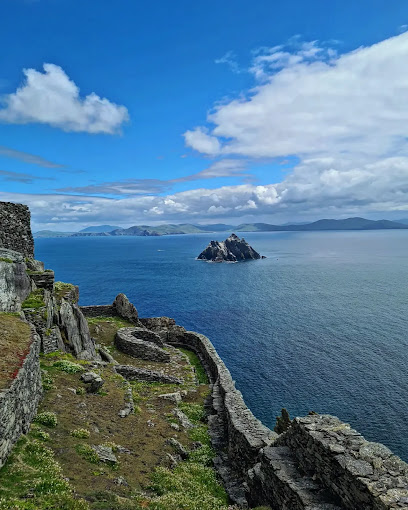
Sceilg Mhichíl / Skellig Michael
Discover the breathtaking cliffs and ancient monastic ruins of Skellig Michael, a hidden gem off the coast of Ireland, rich in history and natural beauty.

Great Skellig
Explore the breathtaking Great Skellig, a UNESCO World Heritage site showcasing ancient monastic ruins and stunning coastal views in County Kerry, Ireland.

Skellig Michael
Explore the breathtaking beauty of Skellig Michael, a UNESCO World Heritage Site offering stunning hikes, rich history, and vibrant wildlife.
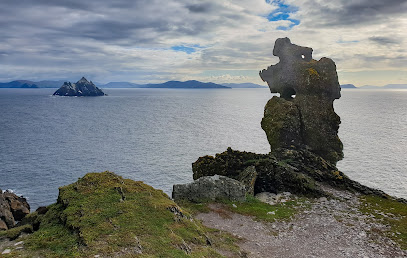
Unmissable attractions to see
Hold a Baby Lamb
Experience the joy of cuddling baby lambs in the scenic landscapes of Co. Kerry, a must-visit for animal lovers and families alike.
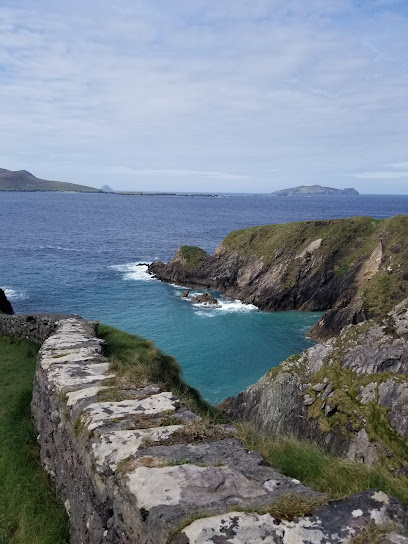
Ceann Sibéal Golf Club
Discover the breathtaking beauty and challenging play at Ceann Sibéal Golf Club on the stunning Dingle Peninsula, Co. Kerry.
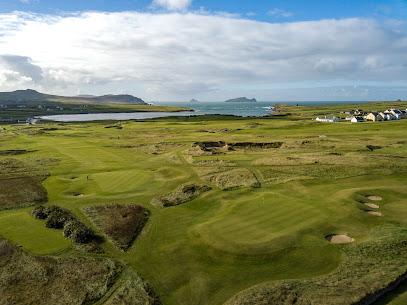
Skellig Gift Store
Explore the Skellig Gift Store in Co. Kerry for unique Irish crafts, local souvenirs, and a taste of authentic Irish culture.

Bá Fhíonáin /St. Finan's Bay
Discover the breathtaking beauty of St. Finan's Bay, a serene coastal gem in Co. Kerry, perfect for nature lovers and adventure seekers alike.

Loher Stone Fort
Explore the enchanting Loher Stone Fort in Co. Kerry, Ireland—a historical gem offering stunning views and a glimpse into Ireland's ancient past.
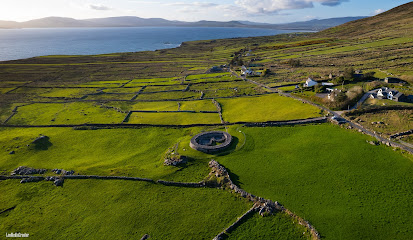
Fogher Cliffs(Aillte Fogher)
Discover the breathtaking beauty of Fogher Cliffs, a stunning coastal attraction in County Kerry, Ireland, perfect for nature lovers and adventure seekers.

Mainistir Fhionáin (St. Fionan’s Monastery)
Experience the serene beauty and historical richness of St. Fionan's Monastery on Skellig Rock, a true gem of County Kerry's heritage.
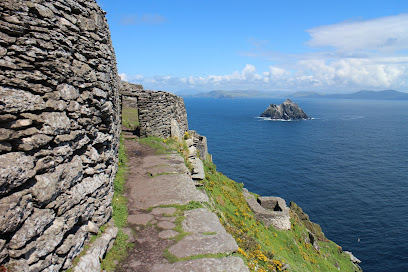
Bray Head (Co. Kerry) Loop Walk(Siúlóid Lúb Ceann Bhré)
Discover the breathtaking Bray Head Loop Walk in County Kerry, a must-visit hiking area offering stunning views of the Skellig Islands and rugged coastlines.

Skellig Tours
Experience the beauty of the Skellig Islands with Skellig Tours, the premier boat tour agency in County Kerry, Ireland, for nature lovers and adventure seekers alike.
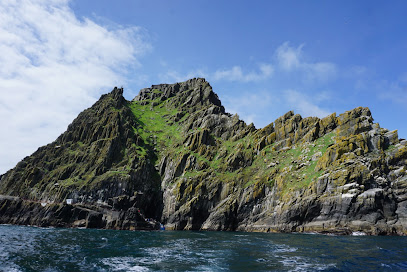
Cnoc na dTobar Pilgrim Path
Experience the breathtaking beauty and spiritual heritage of Cnoc na dTobar Pilgrim Path, a premier hiking destination in County Kerry, Ireland.
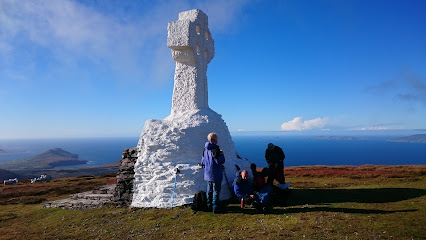
Valentia Heritage Museum
Uncover the fascinating maritime and cultural history of Valentia Island at the Valentia Heritage Museum, a key tourist attraction in County Kerry.
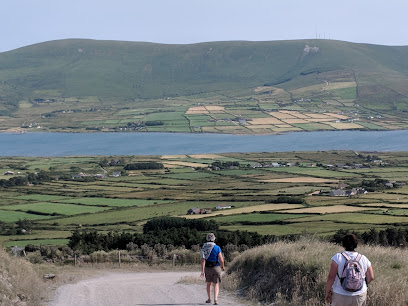
An Diseart
Explore An Diseart in Dingle, a cultural center celebrating Irish heritage through art, education, and spirituality amidst stunning landscapes.
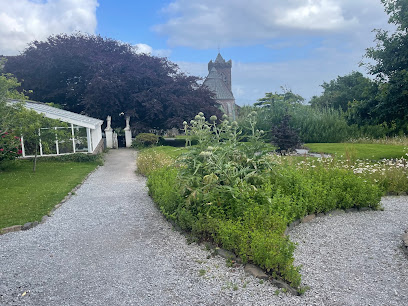
The Glen Church Ruin and Cemetery
Discover the serene beauty and rich history of The Glen Church Ruin and Cemetery in County Kerry, a captivating landmark for every traveler.
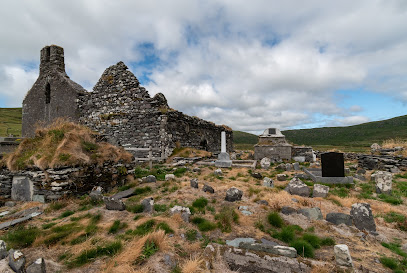
Siúlóid Bhólais( Bolus Barracks Loop Walk)
Experience the stunning landscapes and historical charm of the Bolus Barracks Loop Walk in Co. Kerry, a perfect hiking destination for nature lovers.
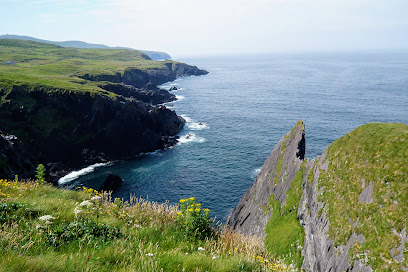
Skelligs Monks Trail guided walk
Explore the Skelligs Monks Trail in Ballinskelligs, Co. Kerry, where stunning landscapes meet rich monastic history on a captivating guided walk.
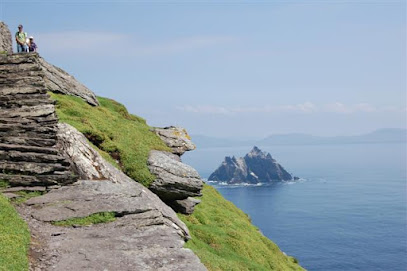
Essential places to dine
Fisherman's Bar & Skellig Restaurant Portmagee
Discover the flavors of the sea at Fisherman's Bar & Skellig Restaurant in Portmagee – where fresh seafood meets stunning coastal views.
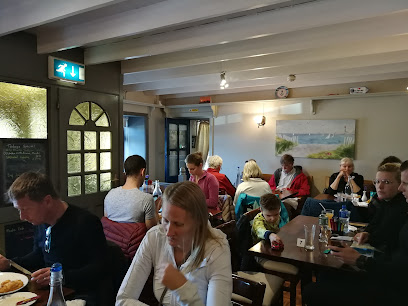
The Moorings Guesthouse & Seafood Restaurant @ The Bridge Bar
Discover fresh seafood and cozy accommodations at The Moorings Guesthouse & Seafood Restaurant in Portmagee, County Kerry.
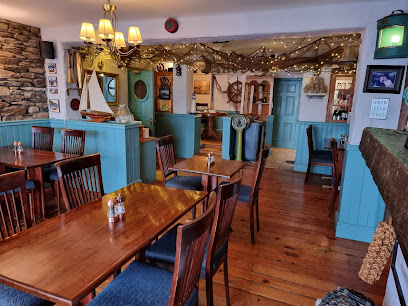
O'Carroll's Cove Restaurant & Bar
Experience authentic Irish cuisine with breathtaking views at O'Carroll's Cove Restaurant & Bar on the scenic Ring of Kerry.
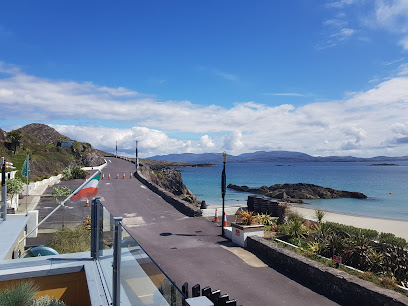
O'Neills The Point Seafood Bar
Discover authentic Irish seafood at O'Neills The Point Seafood Bar in Co. Kerry—where fresh flavors meet stunning coastal views.
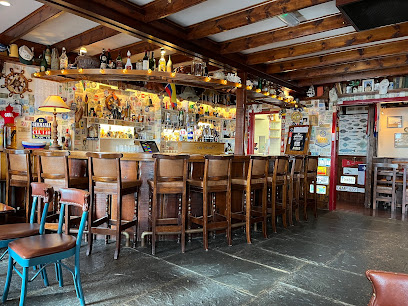
Quinlan & Cooke Boutique Hotel & QC’s Seafood Restaurant
Discover Quinlan & Cooke Boutique Hotel & QC’s Seafood Restaurant in Cahersiveen - where luxury meets fresh coastal cuisine amidst stunning Irish landscapes.
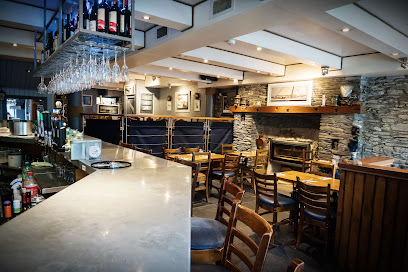
The Smugglers Inn
Discover breathtaking views and delightful cuisine at The Smugglers Inn in Waterville – your ideal getaway in County Kerry.

Coastguard Restaurant
Experience authentic Irish cuisine with stunning coastal views at Coastguard Restaurant in Dingle.
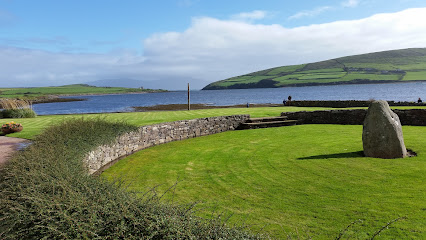
Skellig Seafront Cafe
Discover culinary delights and breathtaking views at Skellig Seafront Cafe in Co. Kerry - a must-visit for any traveler.
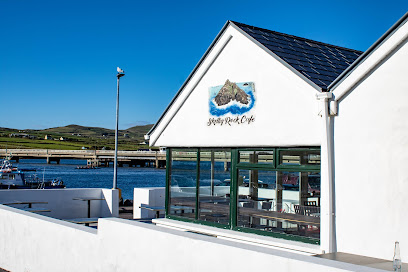
The Atlantic Grill
Experience delightful fast food with breathtaking views at The Atlantic Grill in Ballinskelligs, Co. Kerry.
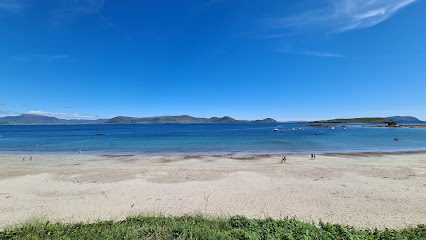
Skellig Cafe
Discover culinary artistry at Skellig Cafe in Ballinskelligs - where delicious pizza meets inspiring art amidst breathtaking scenery.
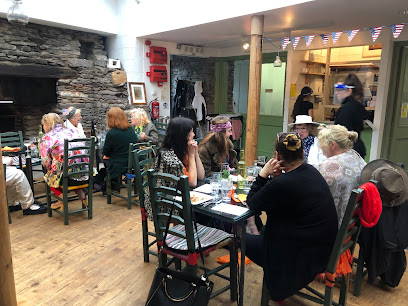
Skelligs Picnic Boxes
Experience the flavors of Co. Kerry at Skelligs Picnic Boxes - delicious takeout perfect for enjoying amidst breathtaking landscapes.
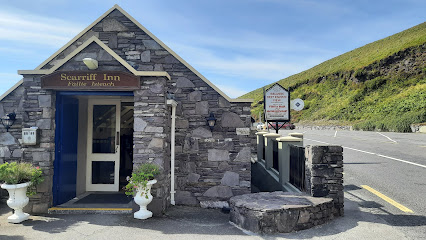
Blaskets Bar & Brasserie @ The Dingle Skellig hotel
Discover Blaskets Bar & Brasserie at Dingle Skellig Hotel - where Irish cuisine meets breathtaking views in County Kerry.
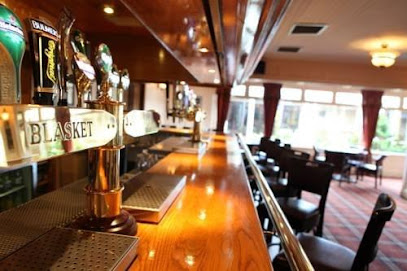
Ruby's Skellig Rock
Experience authentic Irish cuisine at Ruby's Skellig Rock in Cahersiveen – where local flavors meet warm hospitality.
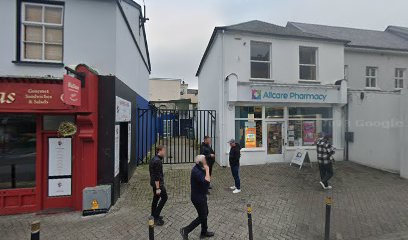
Markets, malls and hidden boutiques
Essential bars & hidden hideouts
Dick Mack's Pub
Discover the authentic Irish pub experience at Dick Mack's Pub in Dingle, where local brews and traditional music create unforgettable memories.
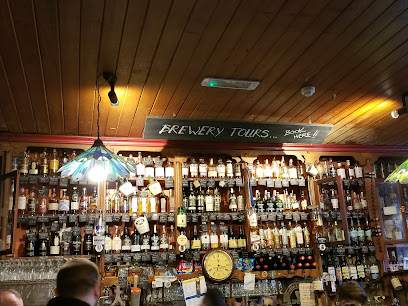
The Dingle Pub
Discover the heart of Dingle at The Dingle Pub, where live music, traditional Irish food, and warm hospitality await every visitor.

Fisherman's Bar & Skellig Restaurant Portmagee
Experience the best seafood in Portmagee with breathtaking views at Fisherman's Bar & Skellig Restaurant, a hidden gem in County Kerry.
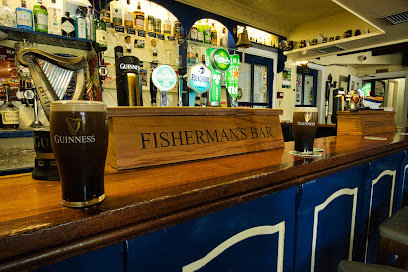
The Moorings Guesthouse & Seafood Restaurant @ The Bridge Bar
Experience the best of coastal cuisine and warm hospitality at The Moorings Guesthouse & Seafood Restaurant in Portmagee, Co. Kerry.
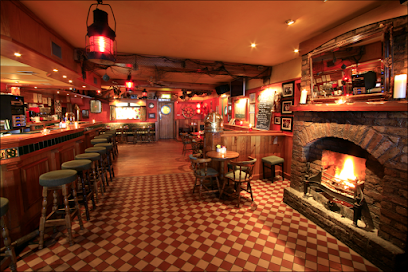
South Pole Inn
Experience the rich history and vibrant atmosphere of the South Pole Inn, a quintessential Irish pub in Annascaul, Co. Kerry.

The Lobster Bar & Restaurant
Discover The Lobster Bar & Restaurant in Waterville, Co. Kerry, where fresh seafood and local flavors come together in a charming coastal setting.
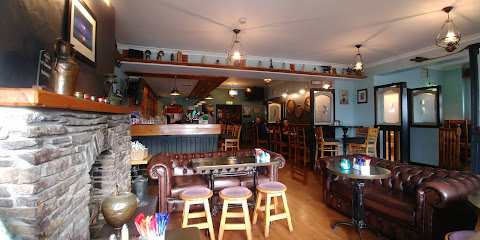
O'Carroll's Cove Restaurant & Bar
Discover the culinary delights of O'Carroll's Cove Restaurant & Bar, a scenic dining spot on the Ring of Kerry showcasing the best of Irish cuisine.
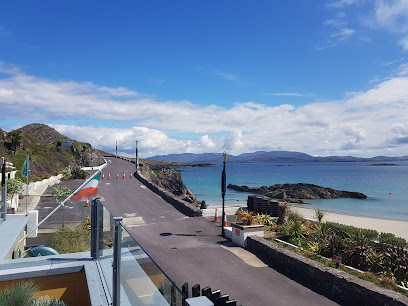
An Droichead Beag
Discover the heart of Irish culture at An Droichead Beag, Dingle's beloved pub offering traditional food, local brews, and live music.
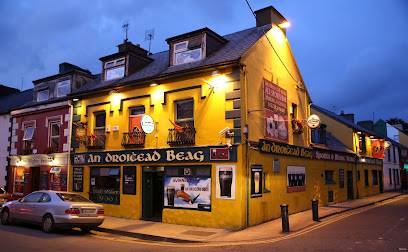
Krugers Bar
Discover the vibrant atmosphere and authentic Irish hospitality at Krugers Bar in Tralee, a must-visit destination for tourists.
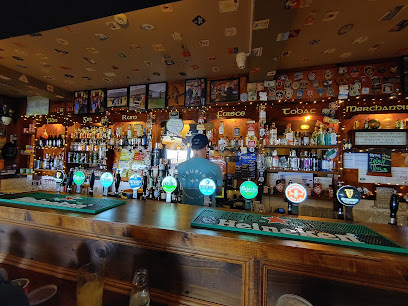
O'Sullivan's Courthouse Pub
Discover the heart of Dingle at O'Sullivan's Courthouse Pub, where live music and authentic Irish cuisine create unforgettable experiences.
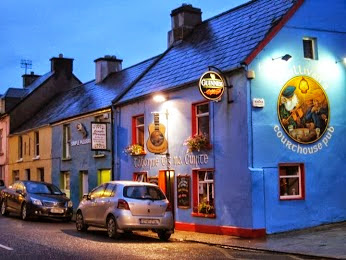
The Fertha
Discover the heart of Irish culture at The Fertha, a vibrant bar in Cahersiveen known for its fantastic drinks and live music.
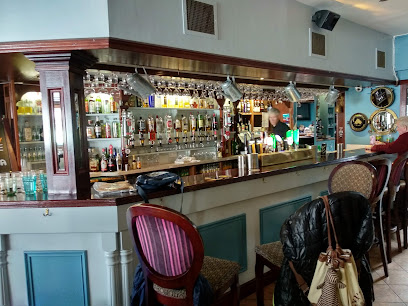
The Smugglers Inn
Experience the charm of The Smugglers Inn in Waterville, Co. Kerry, where exquisite dining meets cozy lodging by the stunning coastline.
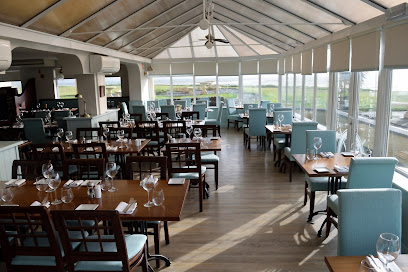
Mike Murt's
Discover the heart of Cahersiveen at Mike Murt's, where exceptional pints and warm Irish hospitality await you.
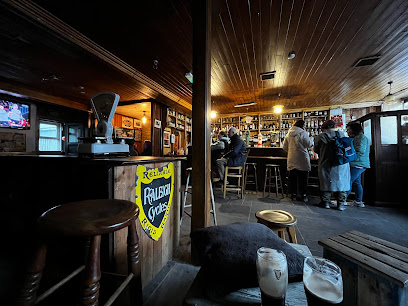
Cable O'Leary's
Discover the heart of Irish culture at Cable O'Leary's Pub in Ballinskelligs, where great food, local brews, and friendly faces await.
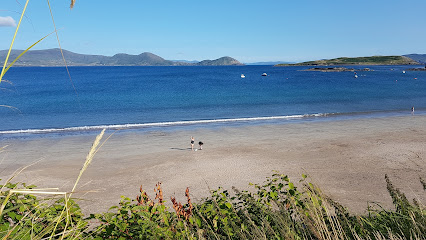
The Ring Lyne Bar & Restaurant
Discover the heart of Irish hospitality and indulge in traditional cuisine at The Ring Lyne Bar & Restaurant on Valentia Island.
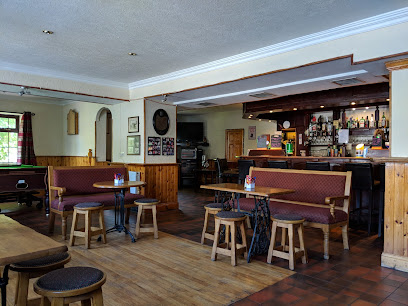
Local Phrases about The Skelligs
-
- HelloDia duit
[dee-ah gwit] - GoodbyeSlán
[slawn] - YesTá
[taw] - NoNíl
[neel] - Please/You're welcomeLe do thoil
[leh duh hull] - Thank youGo raibh maith agat
[guh rev mah ag-at] - Excuse me/SorryMaith thú
[mah hoo] - How are you?Conas atá tú?
[kun-us ah-taw too] - Fine. And you?Tá mé go maith. Agus tú?
[taw may goh mah. ah-gus too] - Do you speak English?An labhraíonn tú Béarla?
[ahn law-vree-un too bayr-lah] - I don't understandNí thuigim
[nee hug-im]
- HelloDia duit
-
- I'd like to see the menu, pleaseBa mhaith liom an ménu a fheiceáil, le do thoil
[bah wy luhm on may-noo ah eck-ahl, leh duh hull] - I don't eat meatNí ithim feoil
[nee ih-him foh-il] - Cheers!Sláinte!
[slawn-cheh] - I would like to pay, pleaseBa mhaith liom íoc, le do thoil
[bah wy luhm ee-uk, leh duh hull]
- I'd like to see the menu, pleaseBa mhaith liom an ménu a fheiceáil, le do thoil
-
- Help!Cabhraigh!
[kah-vree] - Go away!Imigh uaim!
[ih-mee oom] - Call the Police!Glan an Garda!
[glahn ahn gahr-dah] - Call a doctor!Glan dochtúir!
[glahn dohk-too-ir] - I'm lostTáim caillte
[taw-im kahl-cheh] - I'm illTá tinneas orm
[taw chin-uss urm]
- Help!Cabhraigh!
-
- I'd like to buy...Ba mhaith liom ceannach...
[bah wy luhm can-uk] - I'm just lookingNíl mé ach ag breathnú
[neel may awk egg bronth-noo] - How much is it?Cé mhéad atá air?
[kay vayd ah-taw air] - That's too expensiveTá sé ró-dháiríre
[taw shay row-daw-reh] - Can you lower the price?An féidir leat an praghas a ísliú?
[ahn fay-dur lat on prah-gus ah eesh-loo]
- I'd like to buy...Ba mhaith liom ceannach...
-
- What time is it?Cén t-am é?
[kayn tahm ay] - It's one o'clockTá sé a haon a chlog
[taw shay ah hayn ah klog] - Half past (10)Leathuair tar éis (10)
[la-hoo-er tahr aysh (10)] - MorningMaidin
[mah-jin] - AfternoonTráthnóna
[traw-noh-nah] - EveningTráthnóna
[traw-noh-nah] - YesterdayInné
[in-ay] - TodayInniu
[in-yoo] - TomorrowAmárach
[ah-maw-rahk] - 1Aon
[ayn] - 2Dó
[doh] - 3Trí
[tree] - 4Ceathair
[ka-hur] - 5Cúig
[koo-ig] - 6Sé
[shay] - 7Seacht
[shokht] - 8Ocht
[uhkht] - 9Naoi
[nee] - 10Deich
[deh]
- What time is it?Cén t-am é?
-
- Where's a/the...?Cá bhfuil a/an...?
[kaw will ah/ahn] - What's the address?Cad é an seoladh?
[kahd ay ahn shul-ah] - Can you show me (on the map)?An féidir leat mé a thaispeáint (ar an léarscáil)?
[ahn fay-dur lat may ah hash-paynt (ahr ahn layr-skawl)] - When's the next (bus)?Cathain atá an chéad (bus) eile?
[kah-hayn ah-taw ahn khayd (bus) ell-eh] - A ticket (to ....)Ticéad (go dtí ....)
[tic-ayd (goh dee ....)]
- Where's a/the...?Cá bhfuil a/an...?
History of The Skelligs
-
The Skelligs are renowned for their early Christian monastic settlement, which was founded between the 6th and 8th centuries. Skellig Michael, the larger of the two islands, features a well-preserved monastic complex with beehive huts, oratories, and stone steps. These structures were built by monks who sought solitude and a closer connection to God in this remote and rugged environment.
-
The remote location of the Skelligs did not shield it from Viking raids. Historical records indicate that Skellig Michael was attacked by Norsemen in the 9th century. Despite these incursions, the monastic community persisted, demonstrating the resilience and dedication of the monks who inhabited the island.
-
Throughout the Middle Ages, Skellig Michael became an important pilgrimage site. Pilgrims would undertake the challenging journey to the island to pay homage to the monastic settlement and seek spiritual solace. The island's isolation and the monks' austere way of life added to its mystique and allure as a holy site.
-
By the 12th century, the monastic community on Skellig Michael began to decline. The exact reasons are not fully known, but factors likely included harsh living conditions, the shift of religious life to the mainland, and changing political landscapes. By the 13th century, the island was largely abandoned as a monastic site.
-
In the 1820s, Skellig Michael took on a new role with the construction of two lighthouses to aid in maritime navigation. The challenging terrain and harsh weather made the construction process arduous. The lighthouses played a crucial role in guiding ships through the treacherous waters of the Atlantic.
-
In 1996, Skellig Michael was designated a UNESCO World Heritage Site. This recognition highlighted the island's cultural and historical significance, as well as its remarkable natural beauty. The site is now carefully managed to preserve its unique heritage and ensure its protection for future generations.
-
The Skelligs gained international fame in recent years due to their prominent feature in the Star Wars film series. Skellig Michael served as the filming location for scenes in 'The Force Awakens' and 'The Last Jedi.' This brought a new wave of tourism to the islands, blending ancient history with modern pop culture.
The Skelligs Essentials
-
The Skelligs are located off the southwestern coast of Ireland, near Portmagee in County Kerry. The nearest airport is Kerry Airport, approximately 75 kilometers away. From Kerry Airport, you can rent a car or take a bus to Portmagee. Boat tours to the Skelligs operate from Portmagee, generally from April to September, weather permitting. It is advisable to book these tours well in advance as they are very popular and have limited availability.
-
To explore the surrounding areas, renting a car is the most convenient option. Public transport is limited, but local buses do operate from major towns to Portmagee. Once in Portmagee, boat trips to the Skelligs are the primary mode of transportation. These boats are operated by licensed tour companies. Walking is the only way to explore the islands themselves, and be prepared for steep and uneven terrain.
-
The official currency in Ireland is the Euro (€). Credit and debit cards are widely accepted in hotels, restaurants, and shops in Portmagee and other towns. However, it is advisable to carry some cash for smaller establishments and for tips. ATMs are available in Portmagee but may be limited on the islands.
-
The Skelligs and Portmagee are generally safe for tourists. However, due to the rugged and remote nature of the islands, it is essential to follow safety guidelines provided by tour operators. There are no high-crime areas targeting tourists, but basic precautions such as not leaving belongings unattended and being aware of your surroundings are advisable.
-
In case of an emergency, dial 112 or 999 for immediate assistance. The nearest medical facilities are in Cahersiveen, about 15 kilometers from Portmagee. It is recommended to have travel insurance that covers medical emergencies. On the Skelligs, there are no medical facilities, so it is crucial to be cautious and well-prepared before embarking on a tour.
-
Fashion: Do wear sturdy, comfortable footwear suitable for hiking. Avoid high heels or open-toed shoes. Religion: Do respect the sacred nature of the Skellig Michael monastery. Be mindful and respectful when exploring these ancient sites. Public Transport: Do check the local bus schedules in advance as they can be infrequent. Don't rely solely on public transport for your trip. Greetings: Do greet people with a friendly 'hello' or 'hi.' The Irish are known for their hospitality. Eating & Drinking: Do try local seafood and traditional Irish dishes. Don't forget to sample some local brews and whiskeys responsibly.
-
To experience The Skelligs like a local, engage with the local community in Portmagee. Visit the Skellig Experience Visitor Centre to learn about the history and significance of the islands. Try to participate in local events or festivals if your visit coincides with them. For a unique dining experience, sample fresh seafood at the local restaurants. Don't miss the opportunity to stargaze, as the remote location offers spectacular night skies.
Trending Landmarks in The Skelligs
-
Kerry Cliffs (Aillte Chiarraí)
-
Skellig Michael Tours - Skellig Michael Landing Tours and Boat Tours - Casey's Skellig Island Tours
-
The Skellig Experience Visitor Centre
-
Sceilg Mhíchíl/ Great Sceilig
-
Skellig Michael tours- Skellig Michael landing tours - Skellig Island Eco tours - Skellig Boats - Skellig Michael Cruises
-
Ballinskelligs Abbey
-
Mainistir Fhionáin (St. Fionan’s Monastery)
-
Skelligs Rock Cruises
-
Skellig Tours
-
Skelligs Monks Trail guided walk
-
Sceilg Bheag (Skellig Rock Small)
-
Skellig Michael Lower Lighthouse
-
Sceilg Mhichíl / Skellig Michael
-
Great Skellig
-
Skellig Michael
Nearby Cities to The Skelligs
-
Things To Do in Killarney
-
Things To Do in Tralee
-
Things To Do in Kinsale
-
Things To Do in Cork
-
Things To Do in Ennis
-
Things To Do in Limerick
-
Things To Do in Salthill
-
Things To Do in Galway
-
Things To Do in Westport
-
Things To Do in Waterford
-
Things To Do in Kilkenny
-
Things To Do in Athlone
-
Things To Do in Wexford
-
Things To Do in Sligo
-
Things To Do in Dublin







